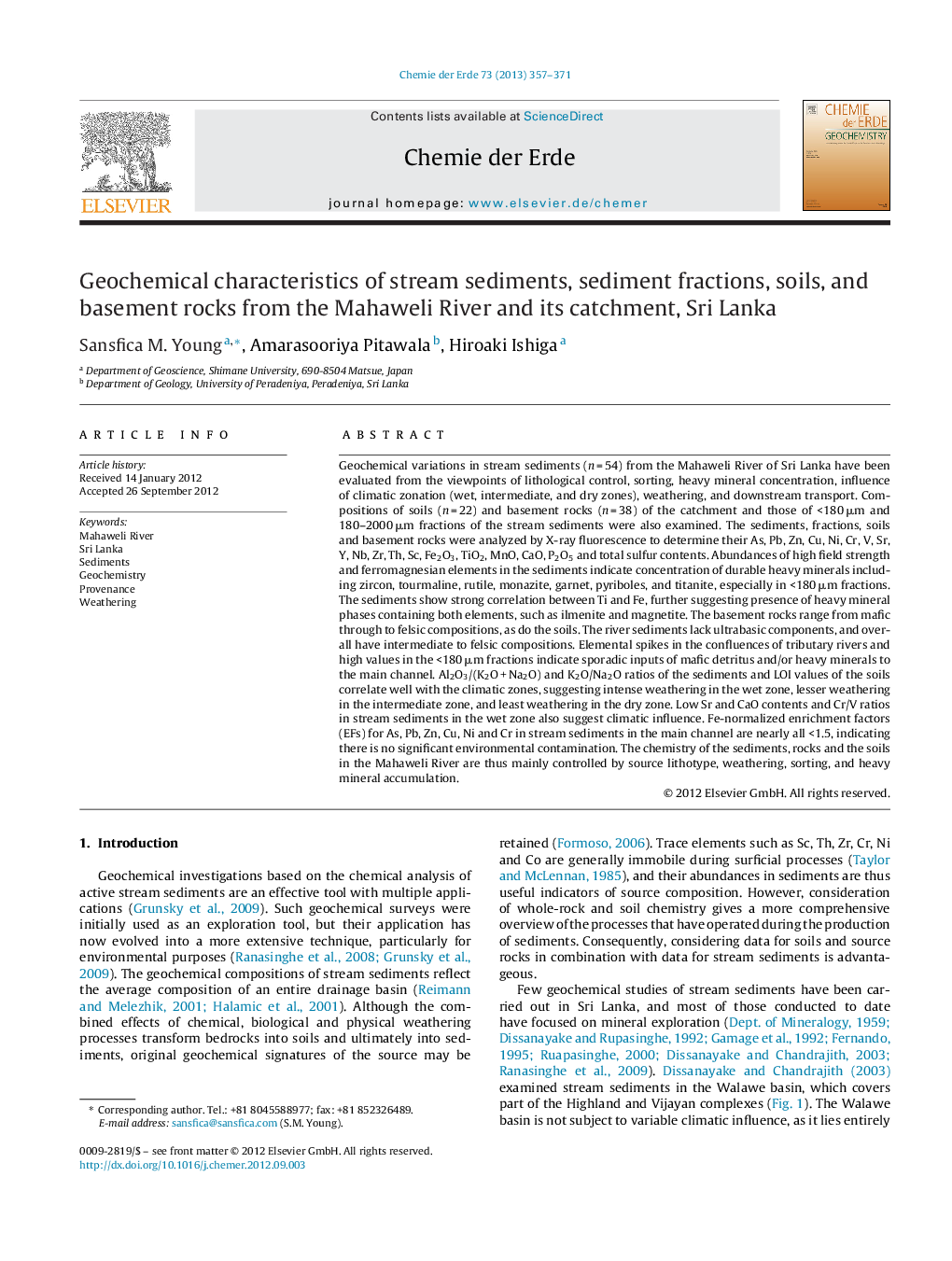| Article ID | Journal | Published Year | Pages | File Type |
|---|---|---|---|---|
| 6305875 | Chemie der Erde - Geochemistry | 2013 | 15 Pages |
Abstract
Geochemical variations in stream sediments (n = 54) from the Mahaweli River of Sri Lanka have been evaluated from the viewpoints of lithological control, sorting, heavy mineral concentration, influence of climatic zonation (wet, intermediate, and dry zones), weathering, and downstream transport. Compositions of soils (n = 22) and basement rocks (n = 38) of the catchment and those of <180 μm and 180-2000 μm fractions of the stream sediments were also examined. The sediments, fractions, soils and basement rocks were analyzed by X-ray fluorescence to determine their As, Pb, Zn, Cu, Ni, Cr, V, Sr, Y, Nb, Zr, Th, Sc, Fe2O3, TiO2, MnO, CaO, P2O5 and total sulfur contents. Abundances of high field strength and ferromagnesian elements in the sediments indicate concentration of durable heavy minerals including zircon, tourmaline, rutile, monazite, garnet, pyriboles, and titanite, especially in <180 μm fractions. The sediments show strong correlation between Ti and Fe, further suggesting presence of heavy mineral phases containing both elements, such as ilmenite and magnetite. The basement rocks range from mafic through to felsic compositions, as do the soils. The river sediments lack ultrabasic components, and overall have intermediate to felsic compositions. Elemental spikes in the confluences of tributary rivers and high values in the <180 μm fractions indicate sporadic inputs of mafic detritus and/or heavy minerals to the main channel. Al2O3/(K2O + Na2O) and K2O/Na2O ratios of the sediments and LOI values of the soils correlate well with the climatic zones, suggesting intense weathering in the wet zone, lesser weathering in the intermediate zone, and least weathering in the dry zone. Low Sr and CaO contents and Cr/V ratios in stream sediments in the wet zone also suggest climatic influence. Fe-normalized enrichment factors (EFs) for As, Pb, Zn, Cu, Ni and Cr in stream sediments in the main channel are nearly all <1.5, indicating there is no significant environmental contamination. The chemistry of the sediments, rocks and the soils in the Mahaweli River are thus mainly controlled by source lithotype, weathering, sorting, and heavy mineral accumulation.
Related Topics
Physical Sciences and Engineering
Earth and Planetary Sciences
Geochemistry and Petrology
Authors
Sansfica M. Young, Amarasooriya Pitawala, Hiroaki Ishiga,
